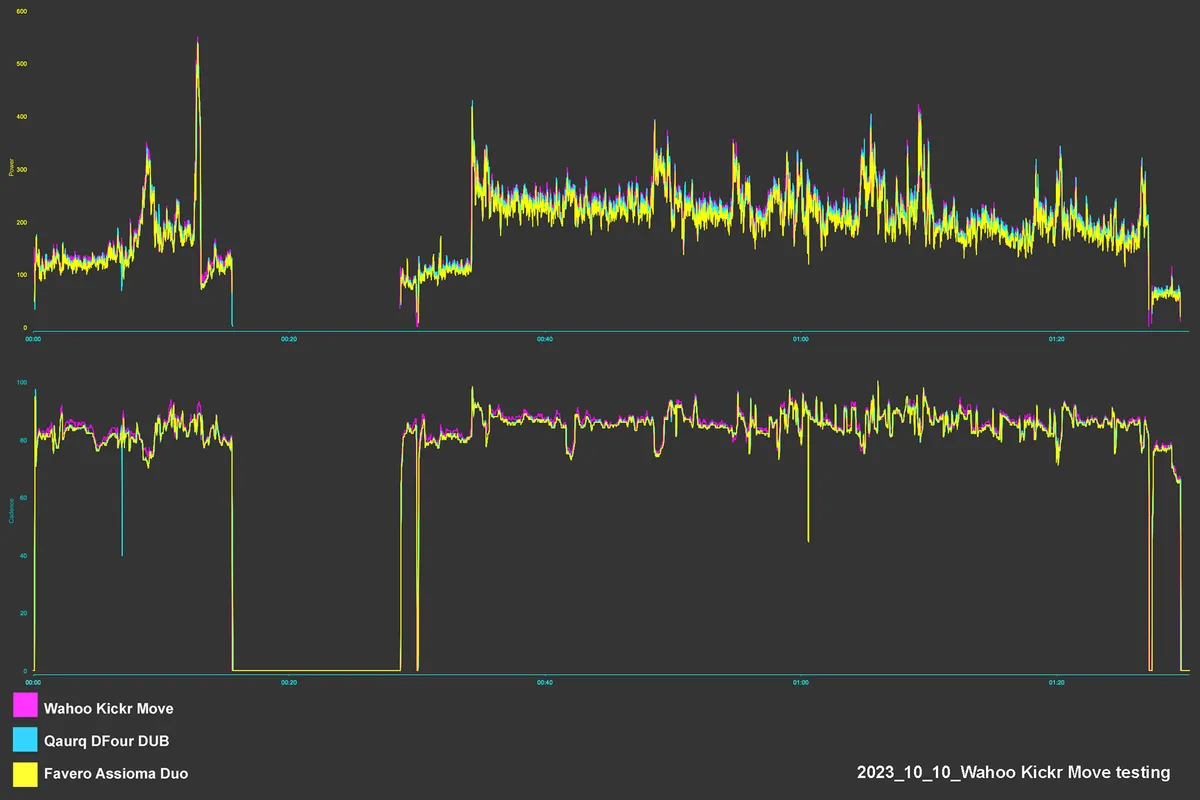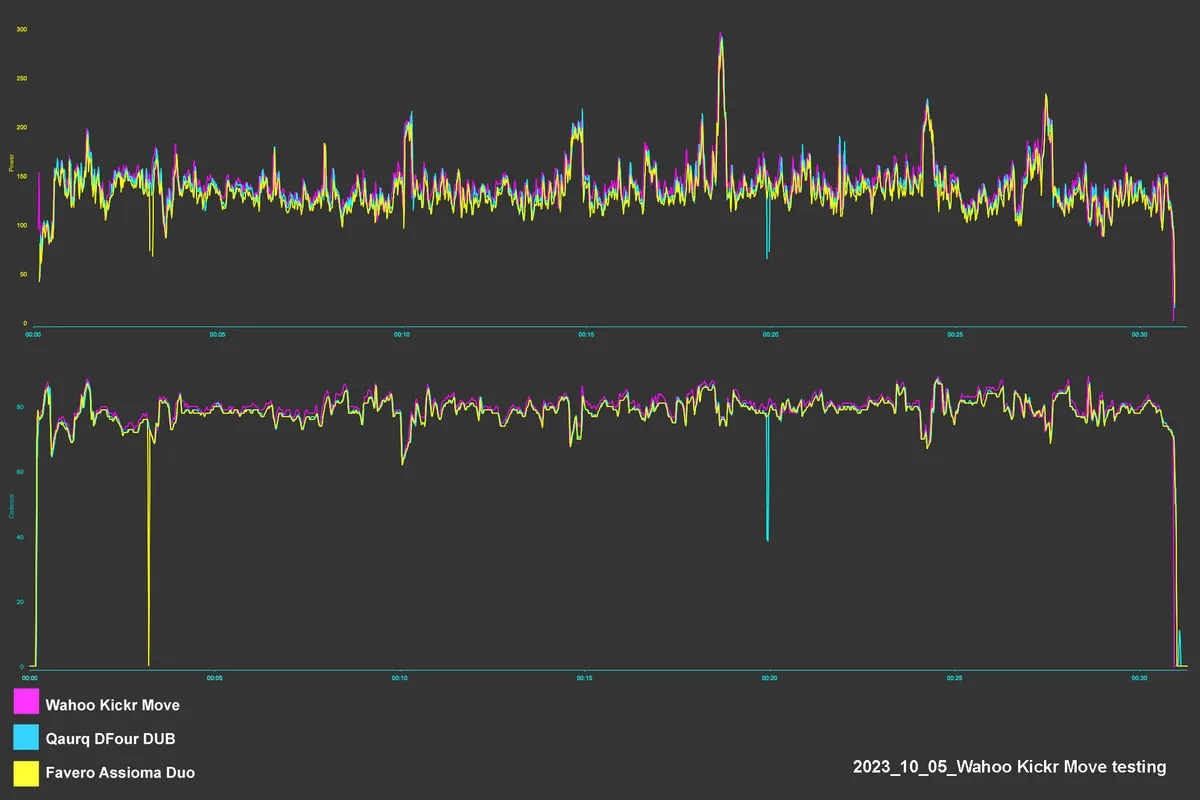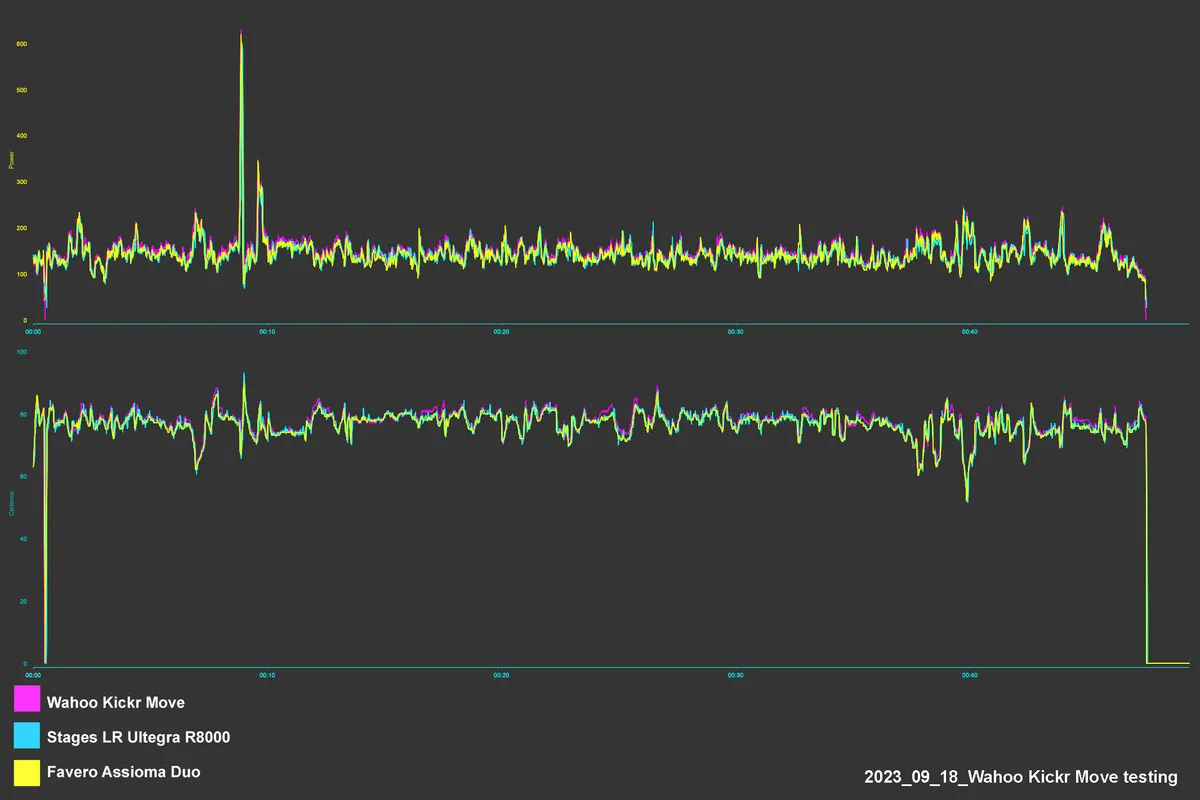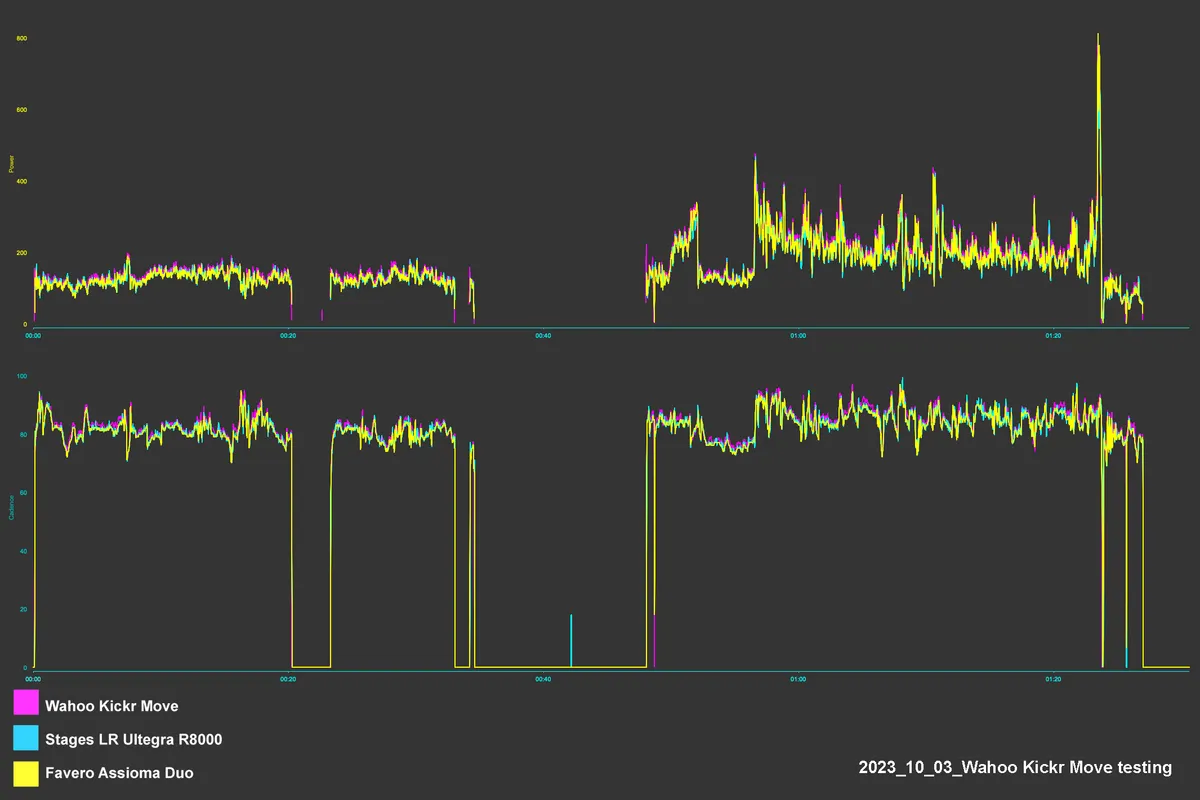The Wahoo Kickr Move is a premium direct-drive smart trainer, with a sliding drive system designed to make riding indoors more engaging and comfortable.
Building upon the highly rated Kickr V6 – one the best smart trainers currently available – the Wahoo Kickr Move shares many of its key components and specifications.
As the name hints, though, the Kickr Move’s key differentiator is a drive system and flywheel that can move fore and aft along a moderately curved, eight-inch track.
In use, this has both positive and negative effects on the ride experience.
While riding in the saddle, the subtle movement generated by your weight shifting makes for a slightly more comfortable and realistic experience.
Transitioning between seated and standing pedalling induces an unrealistic – and annoying – amount of pendular movement, however, as your weight distribution changes more dramatically.
This, combined with only small amounts of side-to-side movement, means using the Kickr Move doesn’t feel “remarkably similar” to riding outdoors, as Wahoo claims.
The hardware required also makes the Kickr Move a very large and heavy trainer, best suited to being set up and left in place.
Like the Kickr V6, the Kickr Move’s power accuracy, inertia and noise levels are all excellent.
At £1,399.99 / $1,599.99 / €1,599.99, that’s to be expected. However, given the new movement mechanics don’t always feel like a step forward, the Kickr Move feels a tough sell compared to cheaper options.
Wahoo Kickr Move specification
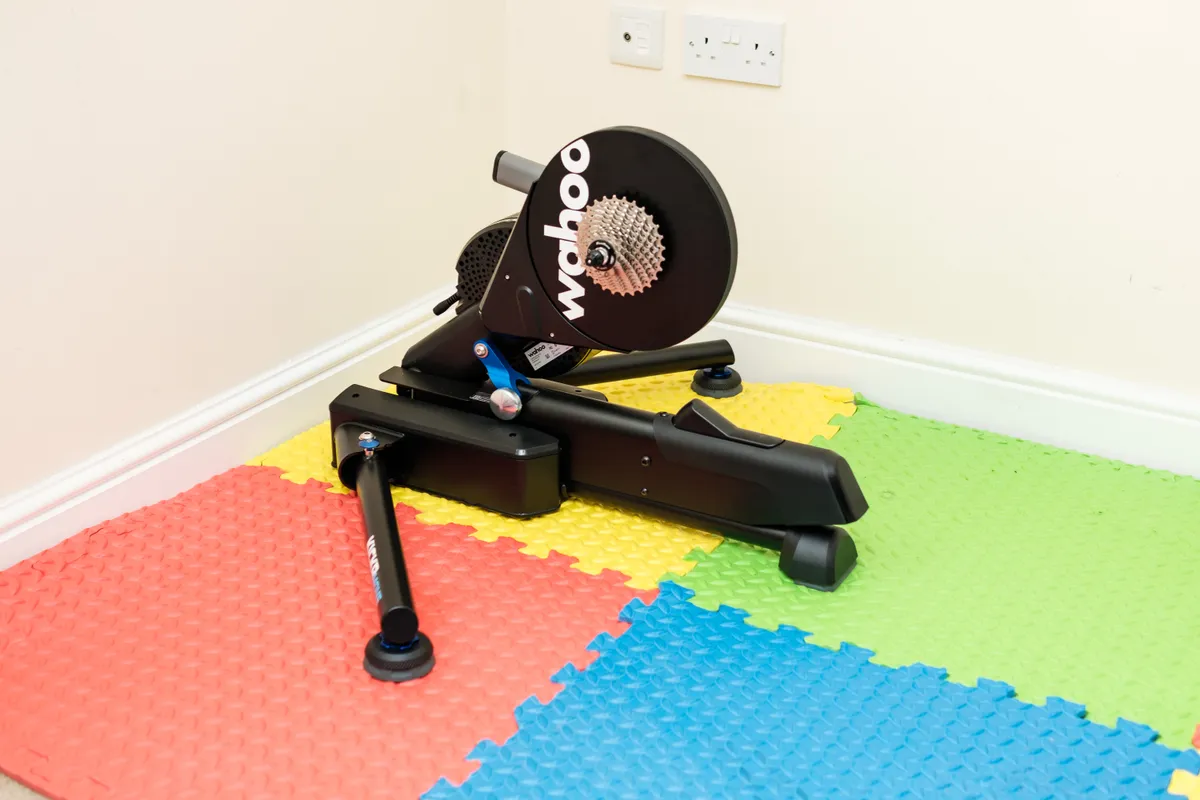
Movement aside, the Wahoo Kickr Move has a nearly identical spec sheet to that of the Kickr V6 (£1,099.99 / €1,299.99 / $1,299.99).
It shares the same maximum power output of 2,200 watts and can simulate gradients of up to 20 per cent.
It also uses the same electromagnetic drive system, 7.3kg flywheel and the same power and cadence measurement tech (with a claimed accuracy of +/- 1 per cent).
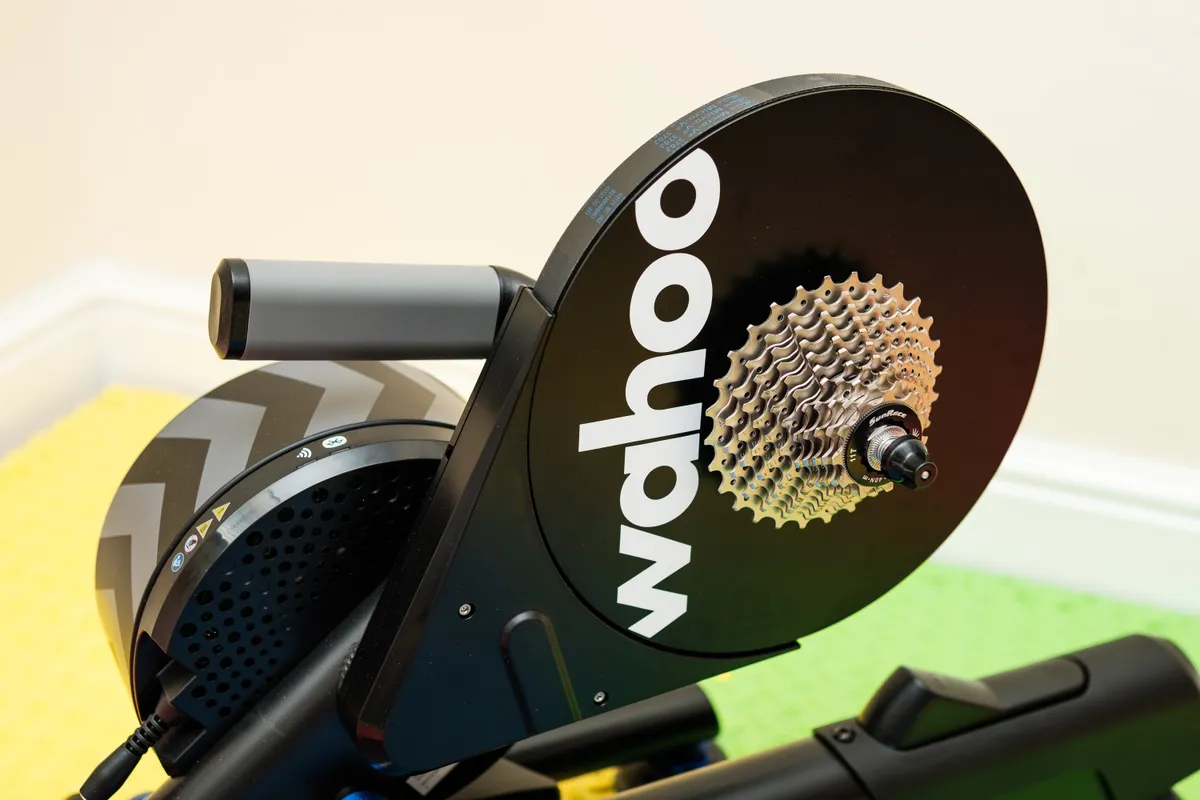
The movement capabilities are where the key difference lies.
In a nutshell, the drive system and flywheel sit within an integrated track along the trainer’s central axis.
When unlocked, the whole system can slide fore and aft on this track (which is eight inches long), in response to changes in your weight distribution while riding.
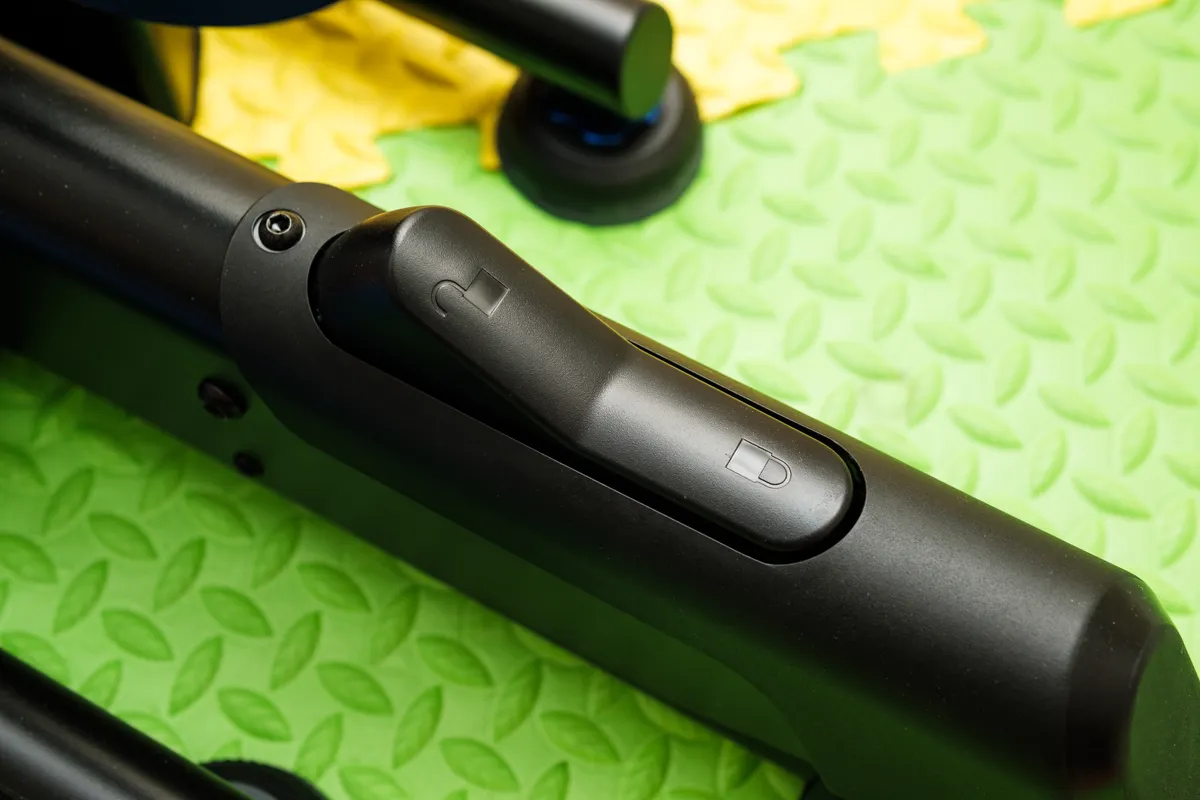
Wahoo claims this offers a “giant leap” in comfort and realism, because it attempts to mimic the natural movement of your bike that occurs while riding in the real world.
The movement can be locked out using a large switch on top of the central leg, which can be helpful for keeping the bike still while getting on or off (this switch can be operated while on the bike, using your left foot).
Wahoo Kickr Move setup
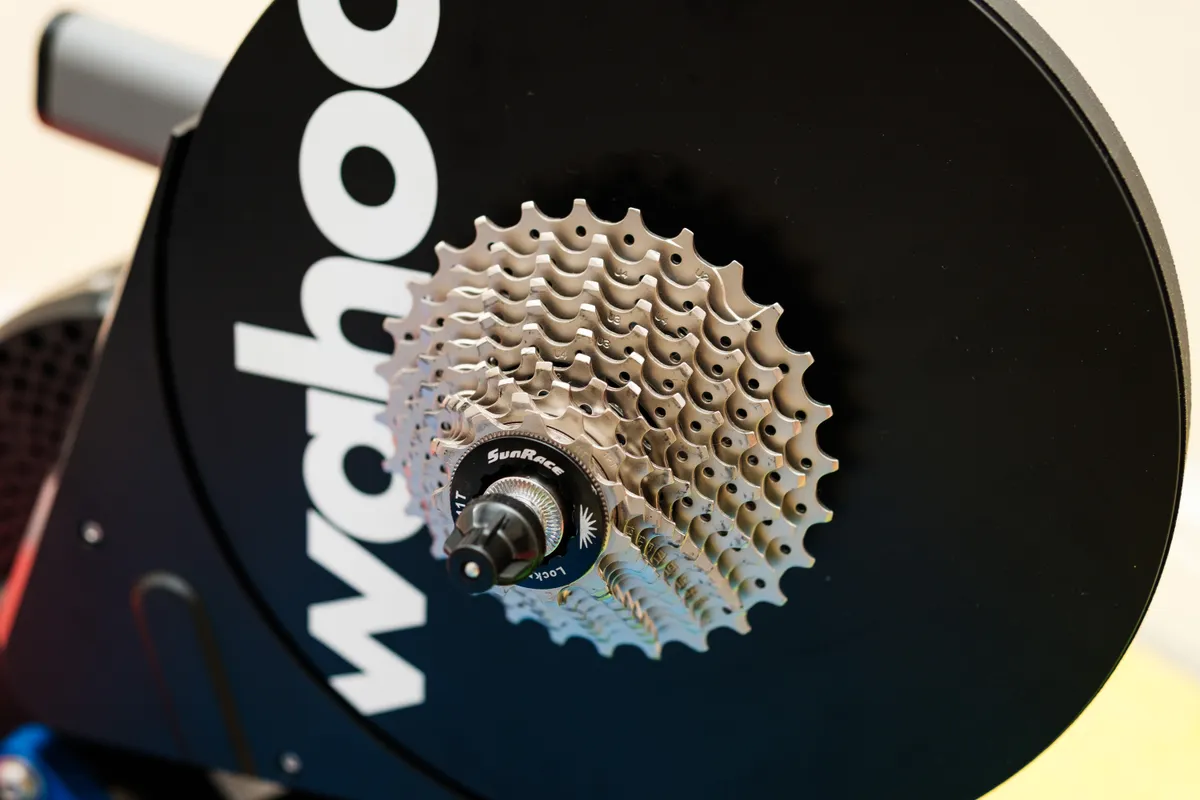
Setting up the Wahoo Kickr Move is very easy, with one exception.
The only major hurdle is that the package as a whole is very large and heavy. With the Kickr Move itself weighing around 29.5kg fully assembled, and the box and accessories a bit more, it took two people to get it upstairs and into my spare room.
The support legs fold away, but the Kickr Move’s size and weight make it best suited to being left in place, rather than stowing it away for storage when not in use.
Fortunately, it arrives fully assembled in the box, including a SunRace 11-speed Shimano-HG-compatible cassette (with a gearing range of 11-28t).
Depending on your bike, you might need to swap the axle adaptors, cassette and possibly the freehub to mount your bike on it.
In my case, I changed the 11-speed cassette for a 12-speed one and the quick-release skewer and axle adaptors for the 12/142mm versions (which are supplied in the box), to mount my Giant TCR Advanced Pro Disc on it.
For those with SRAM AXS or Campagnolo road bike groupsets, compatible freehubs are available separately, costing £49.99 / $69.99 / €59.99 and £54.99 / $69.99 / €54.99, respectively. You’ll also need to supply your own cassette.
Once that’s done, though, the support legs just need to be folded out and the unit plugged in.
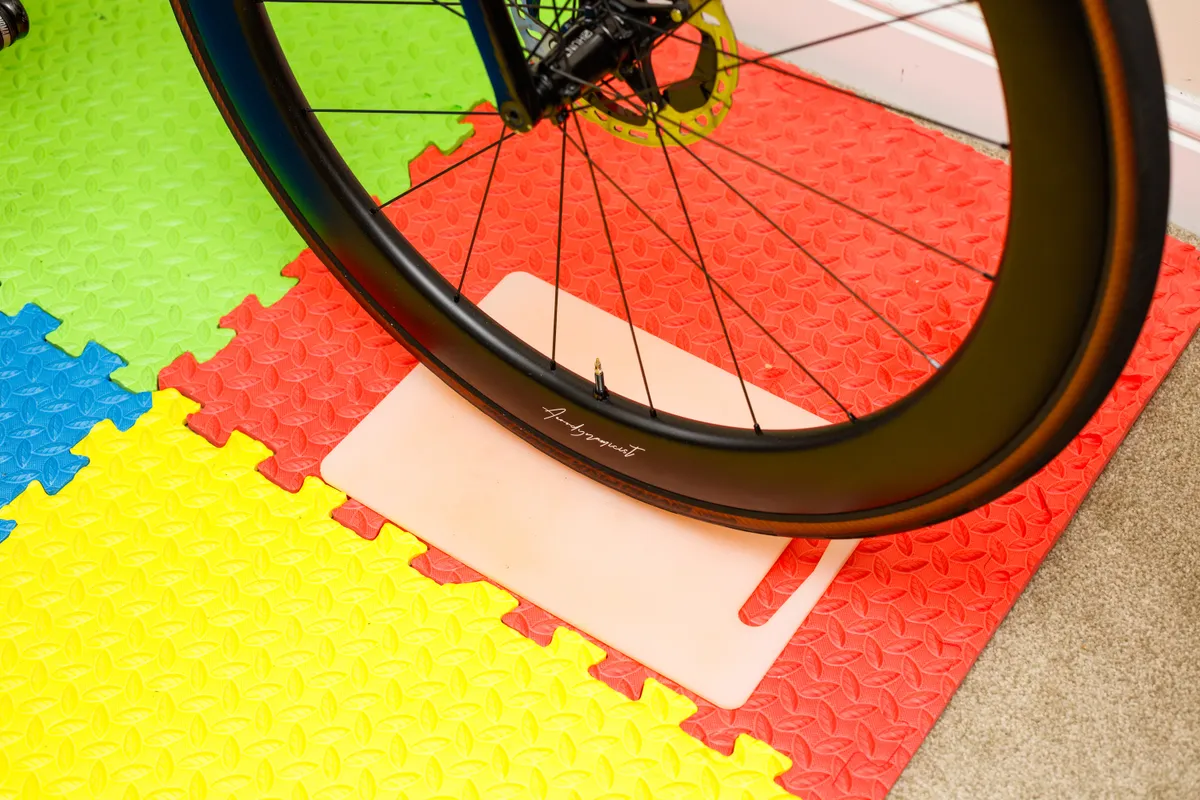
It’s worth noting that if you’re not setting the trainer up on a hard floor – which will enable your front wheel to move fore and aft freely – you may need to find something solid to place under your front wheel (the Kickr Move isn’t compatible with standard front-wheel riser blocks).
Because I have my indoor cycling setup in a carpeted room, with the trainer and bike on foam mats, I resorted to using an old plastic chopping board under my front wheel.
In practice, this mostly worked fine, although the board had a habit of moving underneath my front wheel during difficult efforts, due to the tyre gripping it. During one particularly tough Zwift event, it was almost ejected completely.
Given this, it didn’t feel like a particularly slick solution for such an expensive smart trainer, and it seems a shame Wahoo didn’t develop a specific front-wheel block to complement the Kickr Move.
Wahoo Kickr Move performance
Wahoo Kickr Move connectivity
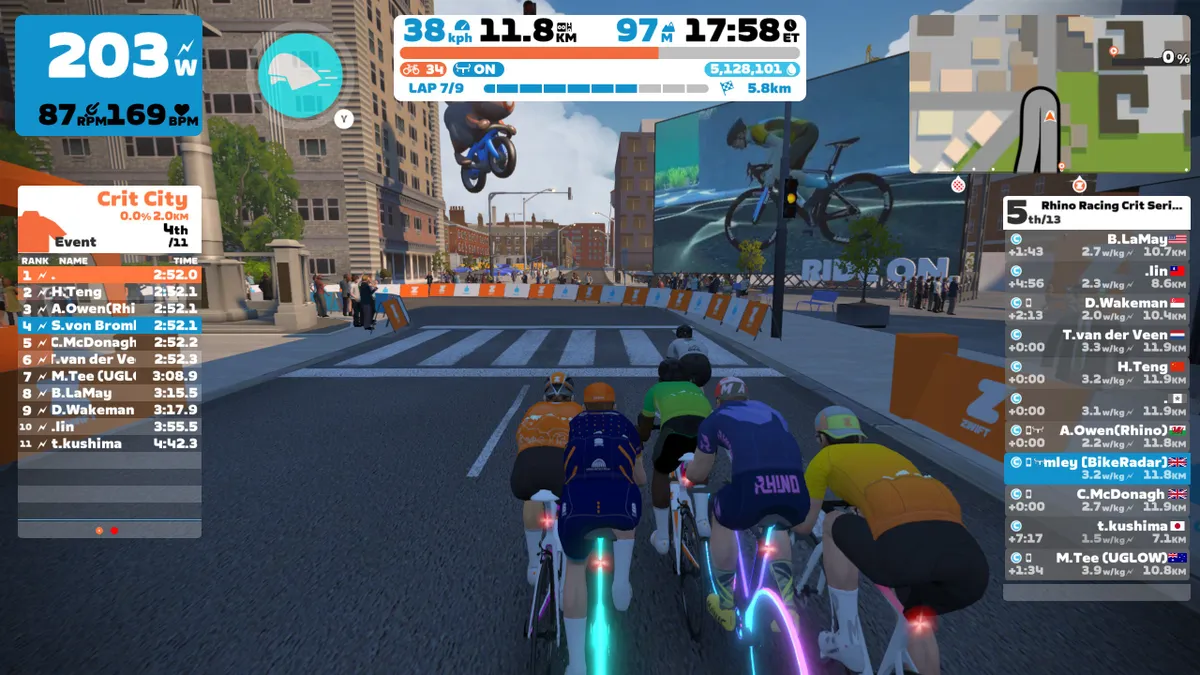
As with the Kickr V6, the Kickr Move can connect to smart devices via ANT+, Bluetooth Low Energy and WiFi.
The increased bandwidth of WiFi enables both to offer Wahoo’s Race mode – an optional setting (which can be turned on via the Wahoo smartphone app) that increases the frequency with which data packets are broadcast by the trainers to your smart device.
With Race mode turned on, the Kickr V6 or Kickr Move can transmit data at up to 10Hz via WiFi, compared to just 1Hz via ANT+ or Bluetooth (as is standard for most smart trainers).
In practice, this offers a slightly more responsive experience in indoor cycling apps such as Zwift.
Is Race mode a game-changer? For keen esports racers – who will likely value the marginal gain of being able to respond to or make attacks a split-second faster – perhaps. For me, though, it was easy to forget I had it turned on for the most part.
WiFi and Race mode are certainly nice features to have, but I don’t think they’re essential – Bluetooth has always done the job for me.
That said, being connected to WiFi enables the Kickr Move (and Kickr V6) to update its firmware automatically, as and when required, which is a welcome convenience.
Wahoo Kickr Move ride feel
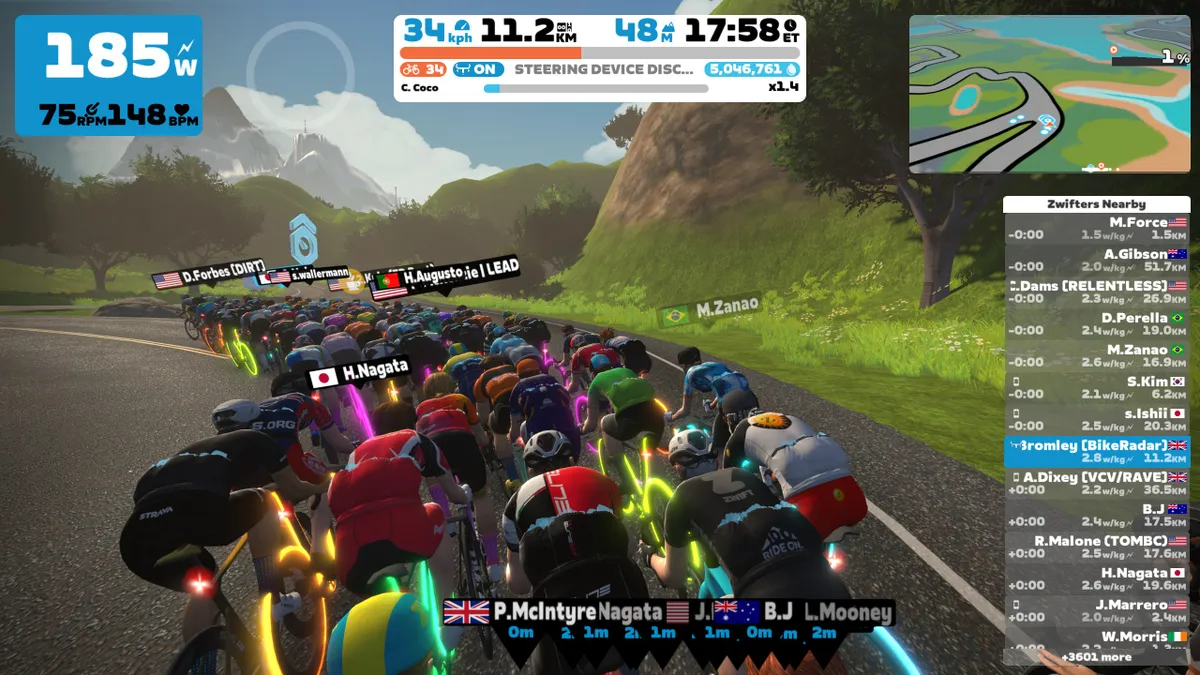
Wahoo promises a “giant leap” in comfort and realism with the Kickr Move, but while the difference in ride feel compared to a fixed smart trainer is distinct, it’s not always a positive one.
When pedalling seated, the small movements induced by subtle shifts in your body weight help reduce saddle pressure and make the ride feel a little more realistic and comfortable.
The effect is subtle, though. On one test ride, I forgot to unlock the Kickr Move before I started riding and didn’t realise until I first stood up on the pedals after a few minutes (at which point the lack of movement was obvious).
Larger shifts in your weight distribution inevitably induce much larger movements, however. Because the Kickr Move is limited to moving mainly along its fixed track, it doesn’t always feel like riding outside, though.
When transitioning from seated to standing pedalling, or vice versa, for example, the Kickr Move will slide forward as your weight distribution shifts forward, but will then inevitably slide back again due to the self-centering design of the curved track.
This generates a strange pendular movement, where you and your bike rock back and forth for a couple of seconds until the Kickr Move resettles at the bottom of the curved track.
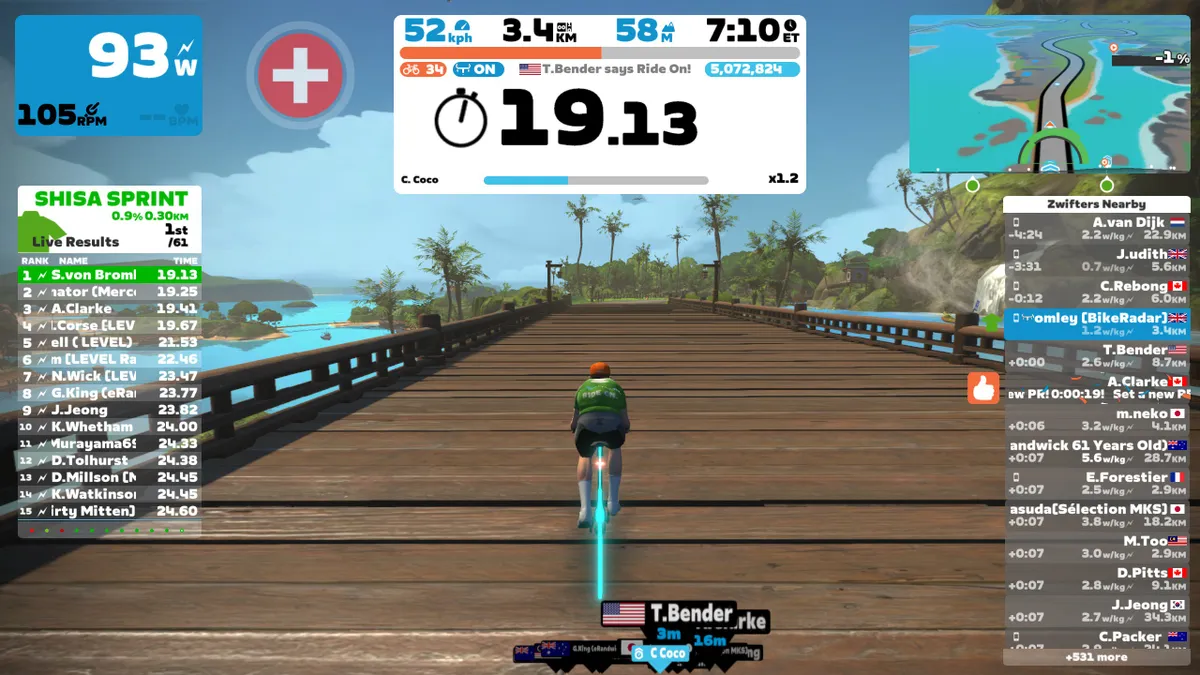
Perhaps it’s just my riding style, but my bike doesn’t perform anything like this kind of movement when doing the same thing in the real world, and it was an annoyance when it happened with the Kickr Move.
Sprinting on the Kickr Move typically feels unnatural, too, because the bike can’t move from side to side as much as it would in the real world, but it does tend to jerk fore and aft.
Of course, it’s fair to say no smart trainer available can replicate the immersive experience of outdoor cycling, and riding a fixed trainer doesn’t feel particularly realistic either.
The key question, though, is whether the Wahoo Kickr Move does a better job than the rest.
When pedalling seated, yes it does, but the effect is subtle and I’m not convinced the changes to ride feel while pedalling out of the saddle are clear improvements.
Wahoo Kickr Move noise
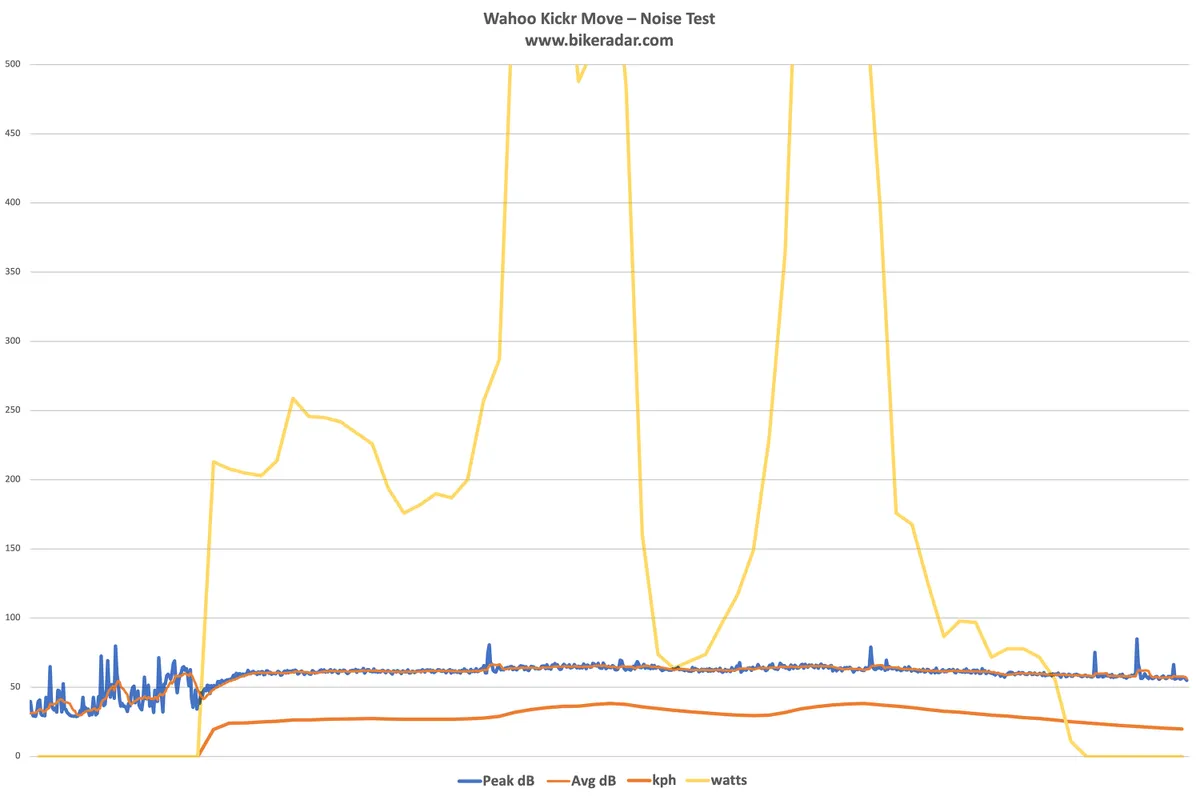
Noise-wise, the Kickr Move is nearly identical to the Kickr V6 – the new movement mechanisms don’t add any appreciable noise.
On the whole, that means the Wahoo Kickr Move is very quiet, with much of the noise being generated by your bike’s drivetrain as you pedal.
I put the Kickr Move through my smart trainer noise test, which involves recording decibel data from a short ride on an iPhone placed one metre away from the trainer, parallel to the drivetrain side of my bike. It averaged around 61 decibels at 30kph / 200 watts, rising slightly to just over 65 decibels during short 40kph / 600-watt sprints.
As always, it’s worth noting your experience may differ from my measured figures, depending on which drivetrain and chain lube you’re using (in this instance, I was using a Shimano Dura-Ace Di2 R9200 drivetrain, with a waxed chain on Rotor chainrings, which are a little noisier than stock Shimano options, for example).
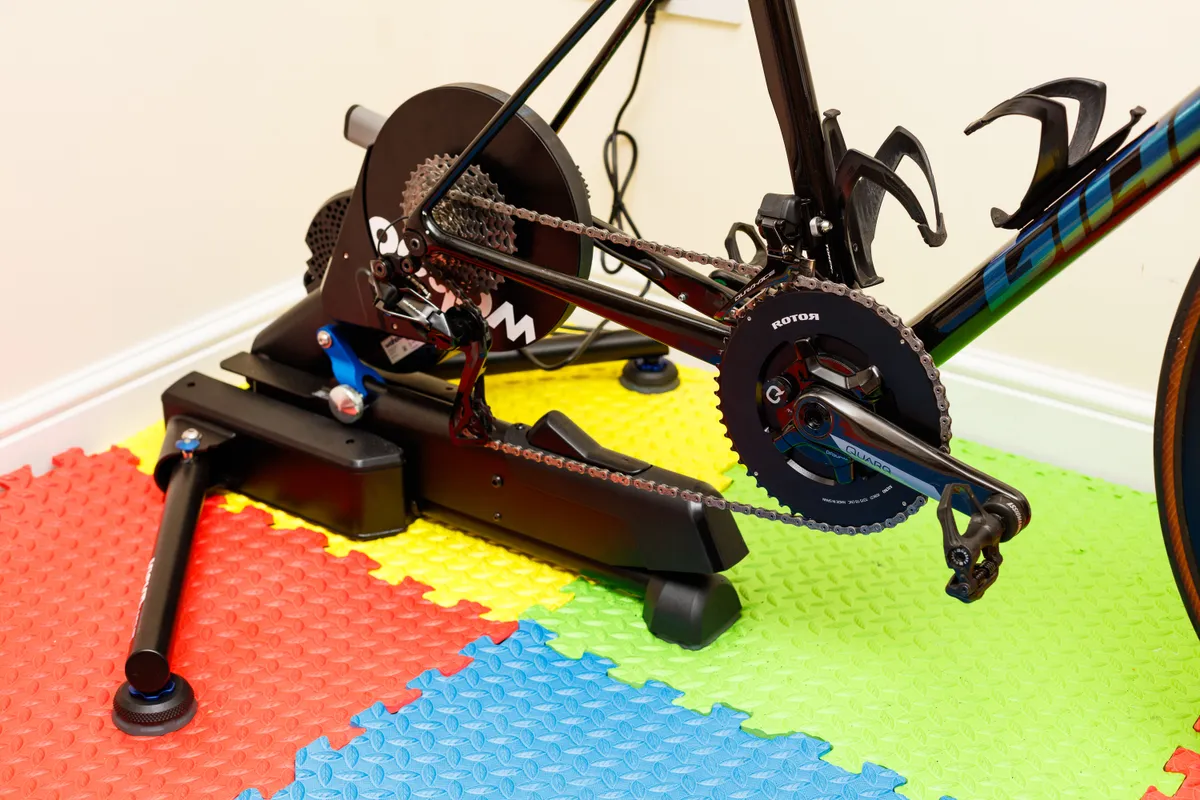
Compared to the competition, this is about as good as it gets. The Kickr Move is a little quieter than the Elite Justo (£999.99 / $1,199.99 / €949.99), for example, and matches other quiet trainers such as the Zwift Hub (£549 / €599 / $599).
The only major difference between the noise from the Kickr Move and Zwift Hub is that the Kickr Move (and Kickr V6) has a slightly louder freehub.
Given most people don’t spend much time freewheeling when riding indoors, or are invariably wearing headphones (and listening to the BikeRadar podcast), this isn’t an issue in reality.
Wahoo Kickr Move power accuracy
The Wahoo Kickr Move retains the +/- 1 per cent claimed power accuracy the Kickr V6 (and Kickr V5 before it) had.
As expected – because of how well the Kickr V6 performed in this area – the Kickr Move tracked benchmark power meters well, with no major deviations.
Similar to the Kickr V6, the Kickr Move has an automatic calibration feature, which negates the need for periodic spin-down calibrations.
In practice, this feature worked as advertised, delivering impressively accurate power and cadence data in all situations.
Wahoo Kickr Move bottom line
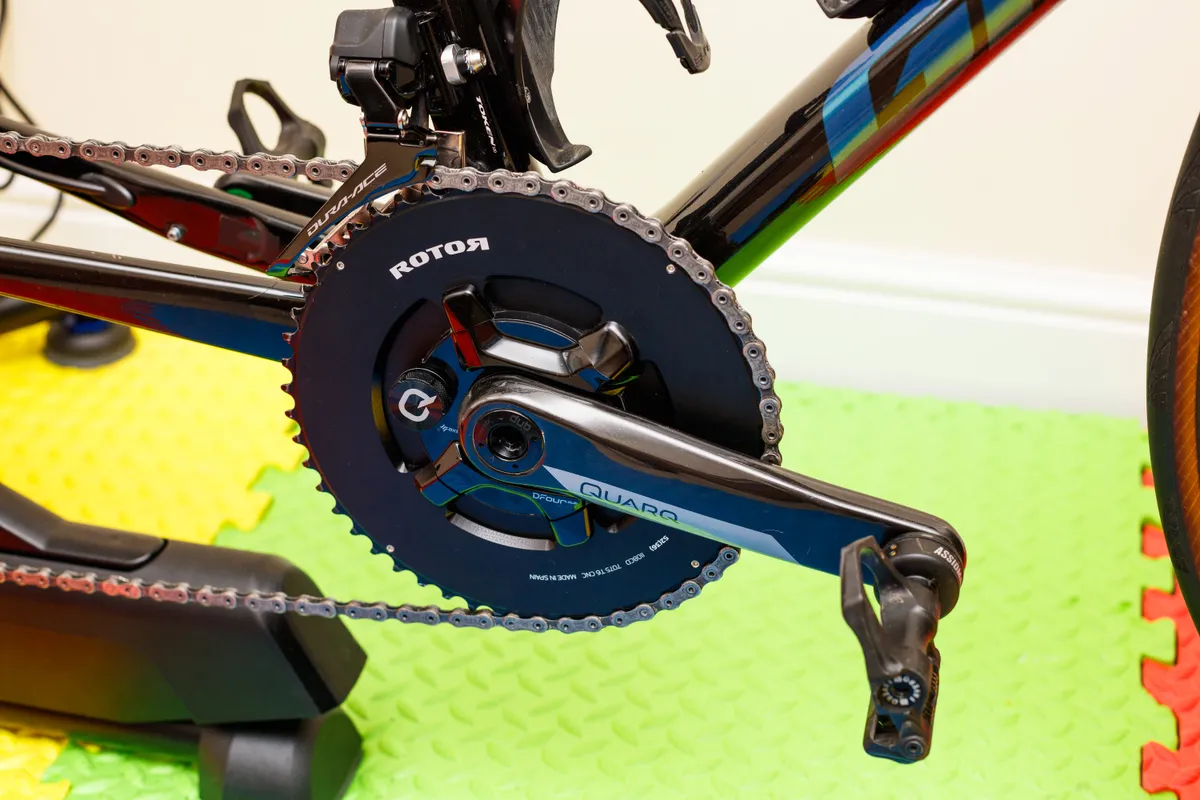
Though Wahoo promises a “giant leap” in comfort and realism with the Kickr Move, it didn’t always feel like an obvious game-changer.
There are clear improvements to seated pedalling comfort, which will likely appeal to those who do frequent or long indoor rides. Pedalling out of the saddle or transitioning between sitting and standing often feels unnatural, however.
Movement aside, the Kickr Move is the same class-leading smart trainer as the Kickr V6 – with excellent ride feel and data accuracy, and low noise levels.
At £1,399.99 / $1,599.99 / €1,599.99, though, it feels hard to justify when its novel feature isn’t a clear-cut improvement at all times.
Product
| Brand | Wahoo |
| Price | €1599.99, £1399.99, $1599.99 |
| Weight | 29.50kg |
Features
| Mount | direct_drive |
| Folding legs | yes |
| Trainer type | smart_trainer |
| Resistance type | electromagnetic |
| Wheel size | 26in |
| Wheel size | 27_5in_650b |
| Wheel size | 29in_700c |
| Connectivity | antPlus |
| Connectivity | antPlus_fe_c |
| Connectivity | ble |
| Connectivity | bluetooth |
| Connectivity | wifi |
| Device compatibility | android |
| Device compatibility | ios |
| Device compatibility | mac |
| Device compatibility | windows |
| Noise | 61.0000 |
| Noise | DECIBEL |
| Max power | 2200.0000 |
| Max power | WATT |
| Max user weight | 113.0000 |
| Max user weight | KILOGRAM |
| Flywheel weight | 7.3000 |
| Flywheel weight | KILOGRAM |
| Max grade (degrees) | 20.0000 |
| Hub compatibility | 130/135mm quick release, 12x142mm and 12x148mm thru axle |
